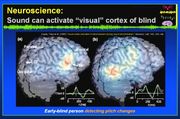nature 2007年2月8日号
Vol.445 No7128 / P.643-647
パーキンソン病モデルにおける線条体LTDと運動障害の内在性カンナビノイドによる回復
Anatol C. Kreitzer1,2 and Robert C. Malenka1
1.Department of Psychiatry and Behavioral Sciences, Nancy Pritzker Laboratory, Stanford University Medical School, Palo Alto, California 94305, USA
2.Present address: Gladstone Institute of Neurological Disease and Department of Physiology, University of California, San Francisco, San Francisco, California 94158, USA.
Correspondence to: Robert C. Malenka1 Correspondence and requests for materials should be addressed to R.C.M. (Email: malenka@stanford.edu).
線条体は皮質や視床からの求心性入力を統合する重要な前脳神経核で、脳幹神経節の入力神経核となる。線条体の投射ニューロンは、黒質網様部(直接経路)か淡蒼球外節(間接経路)に投射する。この2つの経路間での神経活動の不つり合いが、パーキンソン病やハンチントン病でみられる重篤な運動障害の原因であると提唱されている。しかし、この2回路での細胞やシナプスの性質の違いは、ほとんどわかっていない。実際、現行の仮説では、これらの細胞はよく似たシナプス可塑性を示すと考えられている。本論文では、間接経路の中型棘状ニューロン(MSN)への興奮性シナプスが、直接経路のシナプスよりも高い放出確率と、より大きいNMDA受容体電流を示すことを報告する。さらに、間接経路MSNだけが、ドーパミンD2受容体の活性化を要する内在性カンナビノイド仲介性長期抑制(eCB-LTD)を示すこともわかった。パーキンソン病のモデルでは、間接経路のeCB-LTDがみられないが、D2受容体アゴニストや内在性カンナビノイドの分解阻害薬によって回復する。in vivoでこれらの薬物を同時に投与すると、パーキンソン病様運動障害が軽減する。このことは、間接経路シナプスでの内在性カンナビノイド仲介性の抑制が、運動制御に重要な役割を果たしていることを示唆している。これらの知見は、脳幹神経節の正常機能の解明に影響をもつとともに、線条体に原因がある脳障害の治療薬開発に新しい方向性を示唆するものである。
[原文]
Endocannabinoid-mediated rescue of striatal LTD and motor deficits in Parkinson's disease models
Anatol C. Kreitzer1,2 and Robert C. Malenka1
1.Department of Psychiatry and Behavioral Sciences, Nancy Pritzker Laboratory, Stanford University Medical School, Palo Alto, California 94305, USA
2.Present address: Gladstone Institute of Neurological Disease and Department of Physiology, University of California, San Francisco, San Francisco, California 94158, USA.
Correspondence to: Robert C. Malenka1 Correspondence and requests for materials should be addressed to R.C.M. (Email: malenka@stanford.edu).
The striatum is a major forebrain nucleus that integrates cortical and thalamic afferents and forms the input nucleus of the basal ganglia1,2. Striatal projection neurons target the substantia nigra pars reticulata (direct pathway) or the lateral globus pallidus (indirect pathway). Imbalances between neural activity in these two pathways have been proposed to underlie the profound motor deficits observed in Parkinson's disease and Huntington's disease3,4. However, little is known about differences in cellular and synaptic properties in these circuits. Indeed, current hypotheses suggest that these cells express similar forms of synaptic plasticity5,6. Here we show that excitatory synapses onto indirect-pathway medium spiny neurons (MSNs) exhibit higher release probability and larger N-methyl-d-aspartate receptor currents than direct-pathway synapses. Moreover, indirect-pathway MSNs selectively express endocannabinoid-mediated long-term depression (eCB-LTD), which requires dopamine D2 receptor activation. In models of Parkinson's disease, indirect-pathway eCB-LTD is absent but is rescued by a D2 receptor agonist or inhibitors of endocannabinoid degradation. Administration of these drugs together in vivo reduces parkinsonian motor deficits, suggesting that endocannabinoid-mediated depression of indirect-pathway synapses has a critical role in the control of movement. These findings have implications for understanding the normal functions of the basal ganglia, and also suggest approaches for the development of therapeutic drugs for the treatment of striatal-based brain disorders.
Vol.445 No7128 / P.643-647
パーキンソン病モデルにおける線条体LTDと運動障害の内在性カンナビノイドによる回復
Anatol C. Kreitzer1,2 and Robert C. Malenka1
1.Department of Psychiatry and Behavioral Sciences, Nancy Pritzker Laboratory, Stanford University Medical School, Palo Alto, California 94305, USA
2.Present address: Gladstone Institute of Neurological Disease and Department of Physiology, University of California, San Francisco, San Francisco, California 94158, USA.
Correspondence to: Robert C. Malenka1 Correspondence and requests for materials should be addressed to R.C.M. (Email: malenka@stanford.edu).
線条体は皮質や視床からの求心性入力を統合する重要な前脳神経核で、脳幹神経節の入力神経核となる。線条体の投射ニューロンは、黒質網様部(直接経路)か淡蒼球外節(間接経路)に投射する。この2つの経路間での神経活動の不つり合いが、パーキンソン病やハンチントン病でみられる重篤な運動障害の原因であると提唱されている。しかし、この2回路での細胞やシナプスの性質の違いは、ほとんどわかっていない。実際、現行の仮説では、これらの細胞はよく似たシナプス可塑性を示すと考えられている。本論文では、間接経路の中型棘状ニューロン(MSN)への興奮性シナプスが、直接経路のシナプスよりも高い放出確率と、より大きいNMDA受容体電流を示すことを報告する。さらに、間接経路MSNだけが、ドーパミンD2受容体の活性化を要する内在性カンナビノイド仲介性長期抑制(eCB-LTD)を示すこともわかった。パーキンソン病のモデルでは、間接経路のeCB-LTDがみられないが、D2受容体アゴニストや内在性カンナビノイドの分解阻害薬によって回復する。in vivoでこれらの薬物を同時に投与すると、パーキンソン病様運動障害が軽減する。このことは、間接経路シナプスでの内在性カンナビノイド仲介性の抑制が、運動制御に重要な役割を果たしていることを示唆している。これらの知見は、脳幹神経節の正常機能の解明に影響をもつとともに、線条体に原因がある脳障害の治療薬開発に新しい方向性を示唆するものである。
[原文]
Endocannabinoid-mediated rescue of striatal LTD and motor deficits in Parkinson's disease models
Anatol C. Kreitzer1,2 and Robert C. Malenka1
1.Department of Psychiatry and Behavioral Sciences, Nancy Pritzker Laboratory, Stanford University Medical School, Palo Alto, California 94305, USA
2.Present address: Gladstone Institute of Neurological Disease and Department of Physiology, University of California, San Francisco, San Francisco, California 94158, USA.
Correspondence to: Robert C. Malenka1 Correspondence and requests for materials should be addressed to R.C.M. (Email: malenka@stanford.edu).
The striatum is a major forebrain nucleus that integrates cortical and thalamic afferents and forms the input nucleus of the basal ganglia1,2. Striatal projection neurons target the substantia nigra pars reticulata (direct pathway) or the lateral globus pallidus (indirect pathway). Imbalances between neural activity in these two pathways have been proposed to underlie the profound motor deficits observed in Parkinson's disease and Huntington's disease3,4. However, little is known about differences in cellular and synaptic properties in these circuits. Indeed, current hypotheses suggest that these cells express similar forms of synaptic plasticity5,6. Here we show that excitatory synapses onto indirect-pathway medium spiny neurons (MSNs) exhibit higher release probability and larger N-methyl-d-aspartate receptor currents than direct-pathway synapses. Moreover, indirect-pathway MSNs selectively express endocannabinoid-mediated long-term depression (eCB-LTD), which requires dopamine D2 receptor activation. In models of Parkinson's disease, indirect-pathway eCB-LTD is absent but is rescued by a D2 receptor agonist or inhibitors of endocannabinoid degradation. Administration of these drugs together in vivo reduces parkinsonian motor deficits, suggesting that endocannabinoid-mediated depression of indirect-pathway synapses has a critical role in the control of movement. These findings have implications for understanding the normal functions of the basal ganglia, and also suggest approaches for the development of therapeutic drugs for the treatment of striatal-based brain disorders.
|
|
|
|
|
|
|
|
7.神経系の可塑性 更新情報
-
最新のイベント
-
まだ何もありません
-
-
最新のアンケート
-
まだ何もありません
-
7.神経系の可塑性のメンバーはこんなコミュニティにも参加しています
人気コミュニティランキング
- 1位
- 大人のmixi【おとミク】
- 6461人
- 2位
- 食べ物写真をつい撮ってしまう人
- 19244人
- 3位
- 写真を撮るのが好き
- 208299人
























